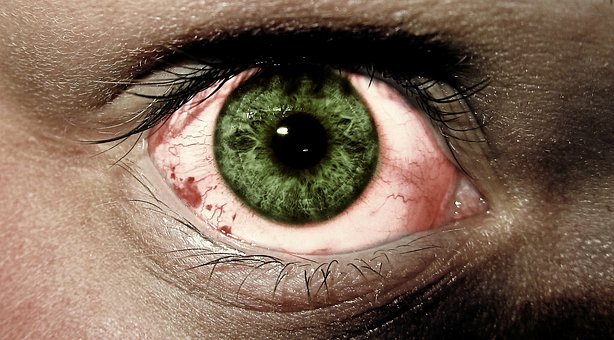Conjunctivitis is an inflammation of the conjunctiva, the thin, transparent outer membrane that covers the white part of the eye (sclera) and the inside of the eyelid.
What are the causes of conjunctivitis?
The main types of conjunctivitis are determined by:
-viral infection, the most common viral agents include adenovirus, herpes simplex virus, herpes zoster virus and enterovirus;
-bacterial infection, i common pathogens include Staphylococcus aureus, Streptococcus pneumoniae, Haemophilus influenzae, Neisseria gonorrhoeae, Chlamydia trachomatis and diphtheria;
-allergic reactioncaused by irritants such as pollen, dust and animal hair;
-other causes include chemicals, contact lens wear, foreign bodies in the eyes, chemical vapours, fumes, dust, fungi and parasites.
Allergic conjunctivitis is the most common, affecting 15% to 40% of the population, and is mainly triggered in spring and summer. Among infectious conjunctivitis, 20% to 70% are viral, mainly due to adenoviruses and with summer prevalence. Bacterial conjunctivitis, on the other hand, is mainly observed from December to April, and is the most common among children.
Conjunctivitis can be further subdivided into acute and chronicThe former is characterised by resolution within 3-4 weeks after onset, while the latter lasts more than 4 weeks.
It can be difficult to determine the exact cause of conjunctivitis, but the patient's age, the time of year and the examination of the eye are of primary importance in identifying the type of conjunctivitis.
What are the symptoms of conjunctivitis?
The main symptom common to all types of conjunctivitis is red eye, the other symptoms, characteristic of the different types of conjunctivitis, are listed in the table.
|
Symptoms |
Conjunctivitis viral |
Bacterial conjunctivitis |
Conjunctivitis allergic |
|
Appearance of eye secretions |
Aqueous |
Mucopurulent |
White fibrous mucus |
|
Presence of erythema |
Mild to moderate |
Moderate to severe |
Mild to moderate |
|
Itching |
Mild to moderate |
Absent to slight |
Moderate to severe |
|
Bilateral eye involvement |
Rare |
Initially one-sided |
Municipality |
|
Presence of lymphadenopathy |
Municipality |
Rare |
Absent |
|
Co-infection of the upper respiratory tract |
Municipality |
Rare |
Absent |
Adapted from Cronau H, Kankanala RR, Mauger T. Diagnosis and management of red eye in primary care. Am Fam Physician 2010;81(2):139.
Prevention
Prevention of conjunctivitis is based on controlling contact with viral, bacterial and allergenic agents. In this regard, there are simple precautions that can be taken to significantly reduce the risk of contracting the disease.
-Frequent hand washing helps reduce the possibility of contracting and transmitting infectious agents.
-Avoiding contact with known allergens is important to avoid recurrence of allergic conjunctivitis events. During periods with high pollen concentrations, patients should try to avoid long stays in open spaces, keep windows closed, shower frequently, wash hair before sleeping, use non-allergenic mattresses and blankets, wash clothes and bedclothes frequently, avoid using carpets in the home, avoid excessive contact with pets, and minimise contact lens wear.
-Never share personal items.
Treatment
-Viral conjunctivitis, The use of artificial tears, topical antihistamines and cold compresses may be helpful in alleviating some of the symptoms. Due to the high transmission rates of adenoviruses, which are responsible for most viral conjunctivitis, handwashing, strict disinfection of instruments and isolation of infected patients is important. In the case of herpes simplex or zooster conjunctivitis, topical and oral antivirals are recommended following evaluation by the ophthalmologist.
-Bacterial conjunctivitis, in 60% of cases spontaneously resolves within 1-2 weeks after onset. The use of certain classes of topical antibiotics has been shown to improve symptoms and reduce the duration of the disease.
-Allergic conjunctivitis, should improve once the allergy is treated and the allergen removed. The use of artificial tears and antihistamines can still provide relief.
Bibliography
-Alfonso et al. Conjunctivitis. Prim Care Clin Office Pract. 2015
-Amir A. Azari et al. Conjunctivitis. A Systematic Review of Diagnosis and Treatment. JAMA. 2013;310(16):1721-173
Dr. Carmelo Chines
Direttore responsabile

